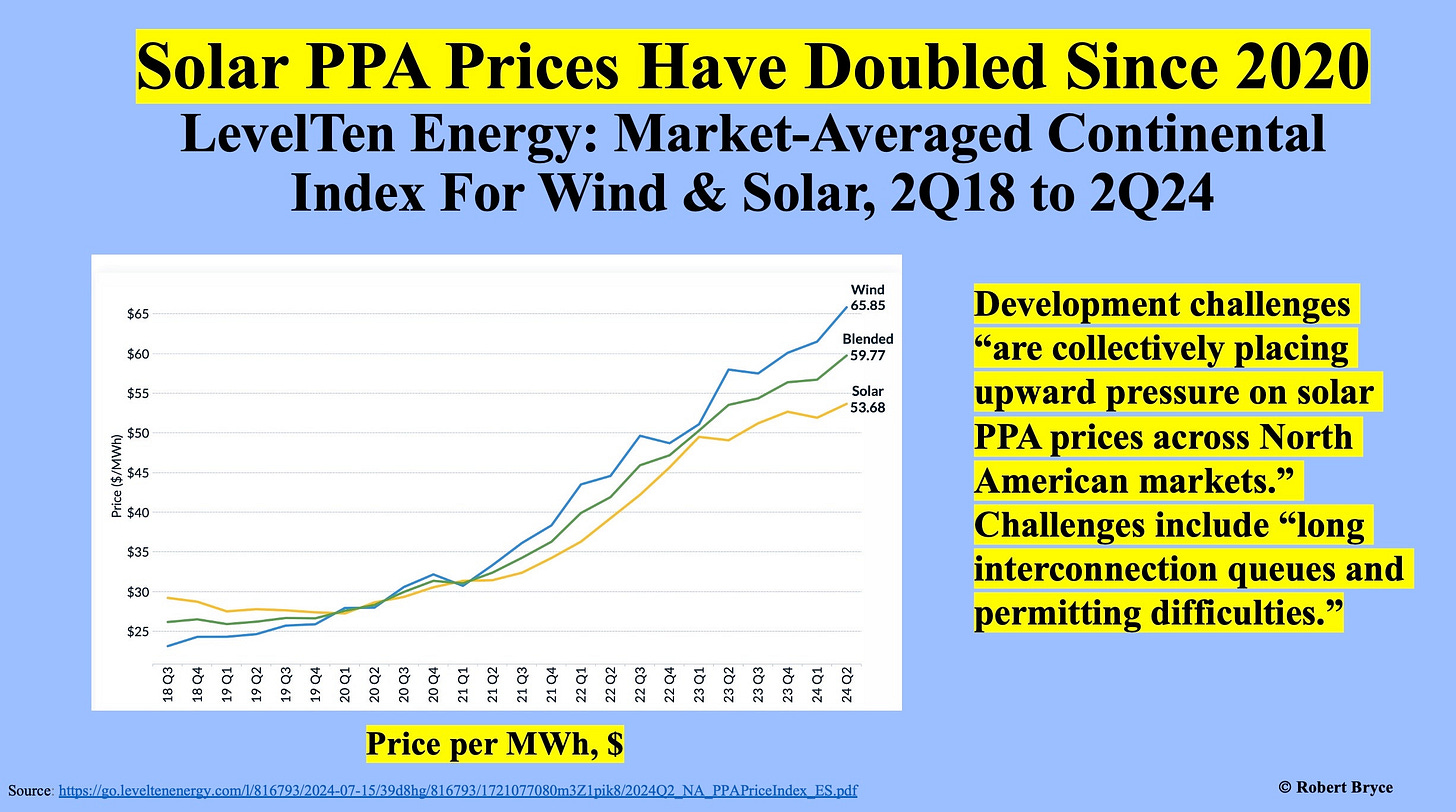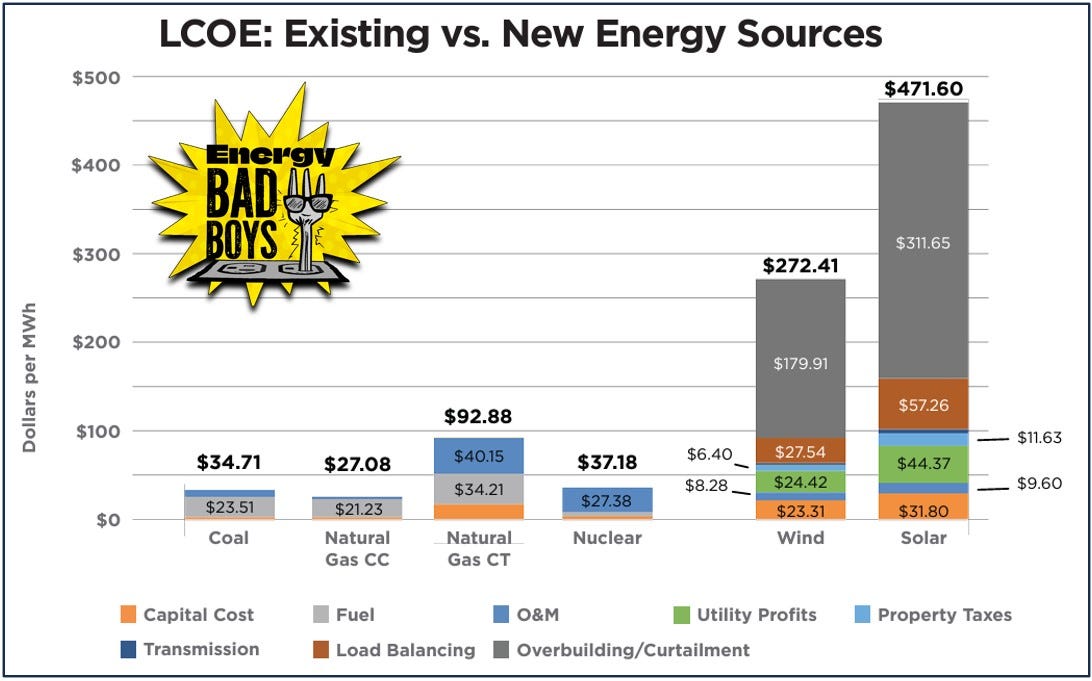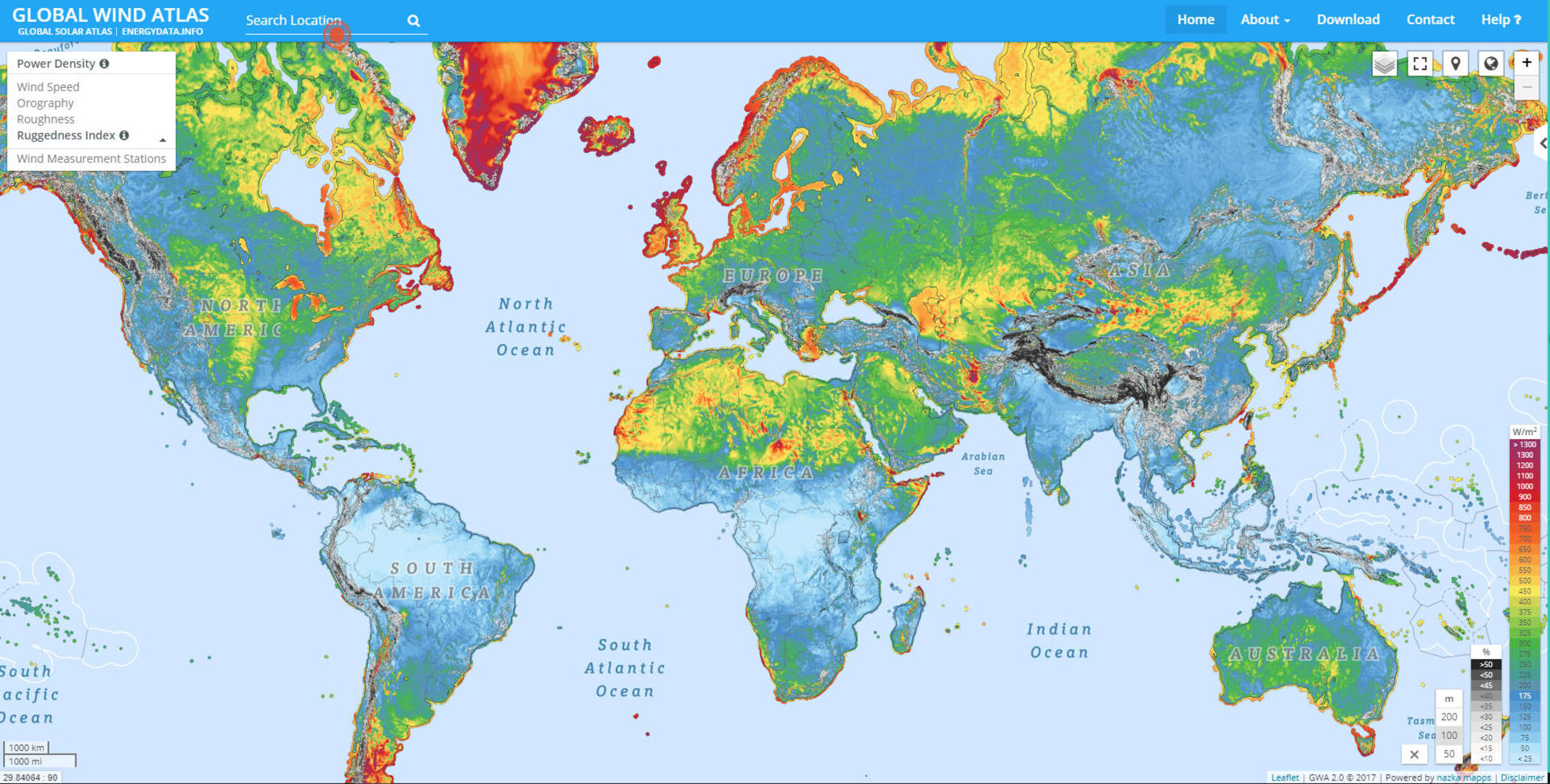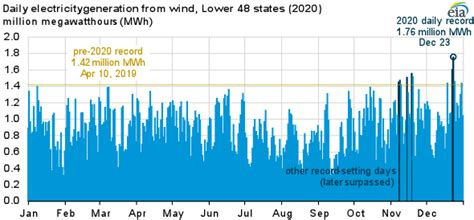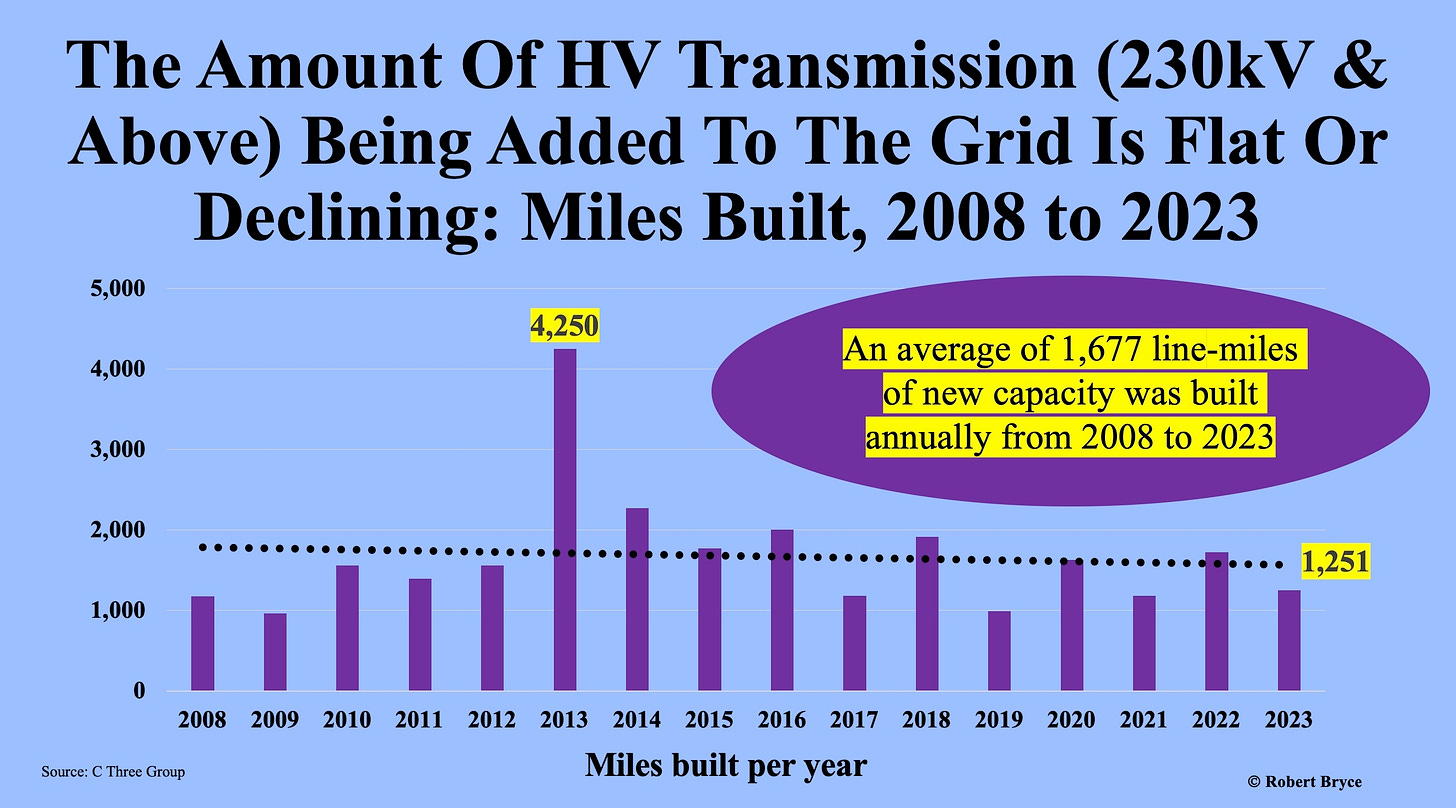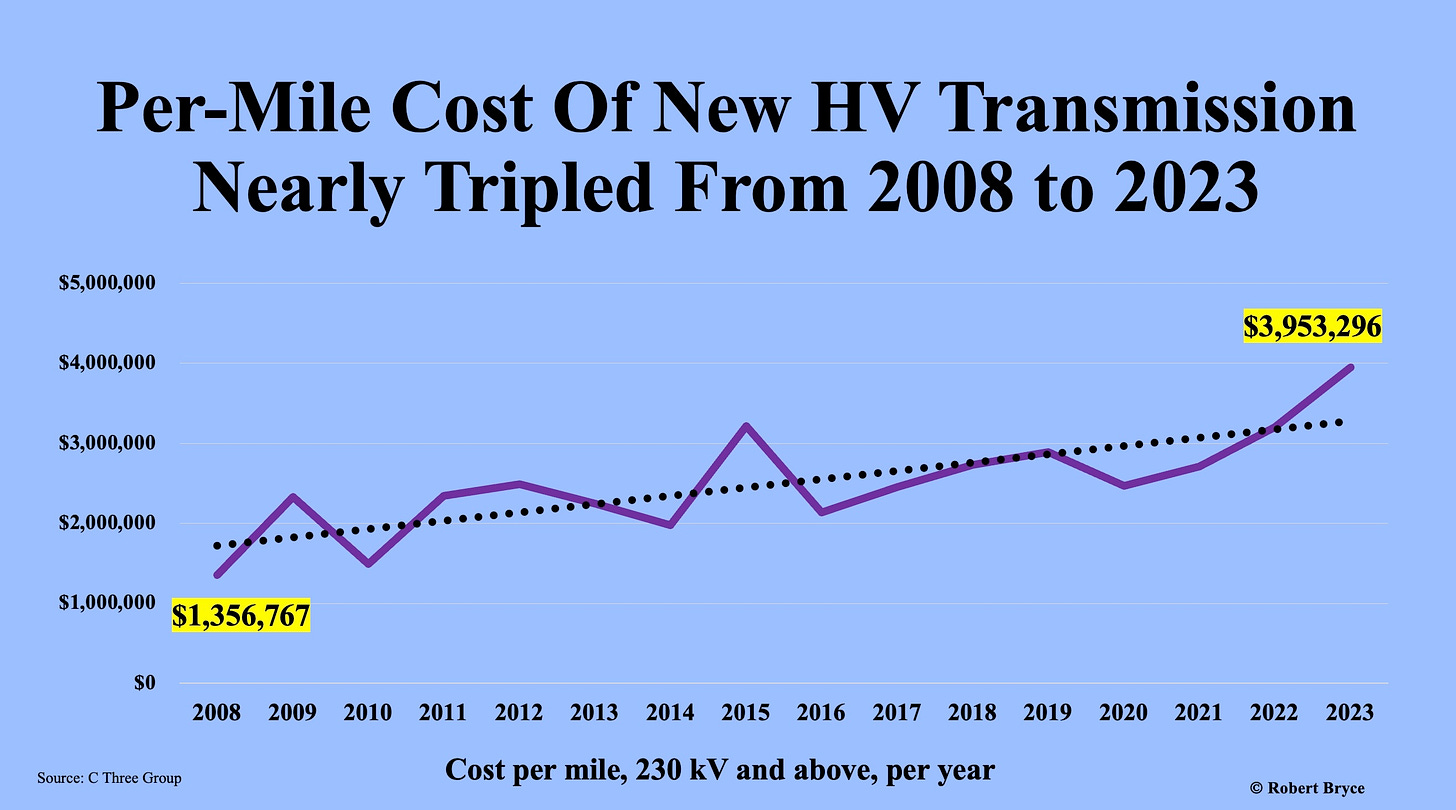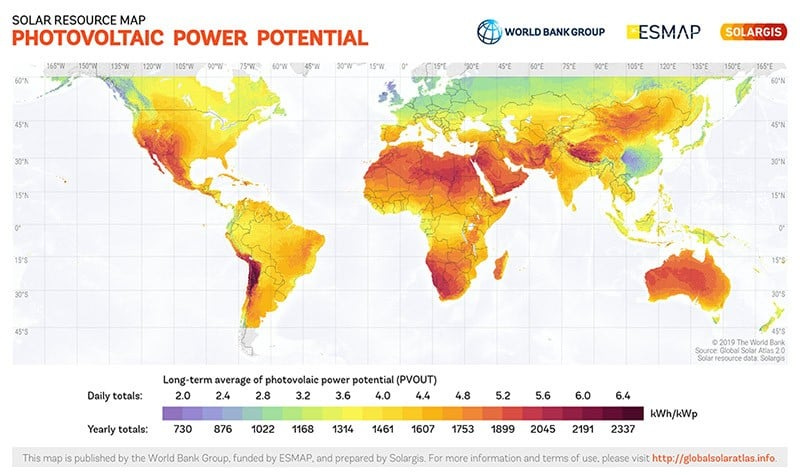Why wind cannot displace global fossil fuels usage at scale
Even when it is combined with solar.
A key theme of this Substack column and my From Poverty to Progress book series is the importance of energy to human material progress. To maintain progress, we need abundant, affordable, and secure energy.
For the last 200 years, fossil fuels have been the dominant energy source, and they seem very likely to do so in the decades moving forward. That is why I consider “widespread usage of fossil fuels” to be the Fifth Key to Progress.
In a previous post, I explained why I am very skeptical that solar power alone can displace fossil fuels at scale globally. In this post, I will explain why I am also skeptical of wind power's ability to do so, either alone or in combination with solar power, utility-scale batteries, and electric vehicles.
Note to reader: I originally planned to combine the solar and wind articles into one post, but it got far too long. Since solar and wind have many of the same disadvantages, this post is somewhat redundant to the first one. Feel free to skim the redundant sections.
To be clear, I am not arguing that:
Wind cannot generate useful electricity. It can and does.
Wind cannot reduce the need to increase fossil fuel usage. It can and does.
Wind cannot provide a substantial percentage of electrical generation in some geographies. It can and does.
We should not construct wind turbines. Where geography, electrical demand, and local cost structure allow, wind turbines are often a good supplement to other energy sources.
I am arguing that even with the greatly expanded construction of wind turbines the forced Green energy transition via government mandates, taxes, and subsidies will:
Inevitably fail to achieve NetZero by 2050
Make virtually no difference in future global temperatures.
Cost tens of trillions of dollars (an estimated $1.77 in 2023 alone)
Greatly increase energy prices
Undermine long-term economic growth
See also my other posts on Green energy policies:
A simple and cost-effective plan to quickly lower US carbon emissions
More evidence that solar + wind cannot decommission coal plants at scale
You should also check out my “From Poverty to Progress” book series:
Here are a few reasons why I seriously doubt that wind power will be able to displace fossil fuels at scale globally:
Cost is only one of the factors that constrain wind power, so unlike many commodities, declining prices do not automatically lead to increased adoption. Low-cost wind is necessary, but not sufficient to replace fossil fuels on a global scale.
The non-cost factors (described below) are much harder to overcome. They might even turn out to be impossible to overcome in a cost-effective manner.Wind power only generates electricity, which is just one of the many uses of fossil fuels.
The Levelized Cost of Energy (LCOE) of wind power has increased substantially in the past few years. The era of declining cost of wind may be over. This may be a temporary blip, but my guess is that wind turbine technology has finally reached its price bottom based on the limits of physics, engineering, manufacturing, and materials.
The Purchase Price Agreement (PPA) for wind projects in the United States has tripled since 2019, while solar projects have doubled. The PPA is the actual cost for a specific solar or wind project paid by the utility, while LCOE is just an estimate. In a competitive market, PPA prices roughly approximate LCOE minus government subsidies.
Because of these increasing costs, new wind farm construction in the United States has declined since 2020. With the exception of China, this seems to be a global trend. This may be a short-term blip or a new trend:
New power plants are almost always more expensive than existing power plants whose capital costs have largely or entirely been paid off. This means that new wind is almost always more expensive than existing fossil fuel, nuclear, or hydro plants. This invalidates the claim that “wind is cheaper than fossil fuels” in almost all situations.
Virtually every grid that constructs wind farms experiences increased electricity prices, which undermines the argument that “wind is cheaper than fossil fuels.” Nations that rely heavily on wind power to generate electricity have some of the highest electricity prices in the world.
Wind power is highly constrained by geography (this fact is almost always ignored in these utopian projections of the future). So far, most wind-based generation has been in the North American Great Plains and the Atlantic seaboard of Europe. This is the low-hanging fruit of the geography of wind. It is going to get much harder in other regions.
The Levelized Cost of Energy (LCOE) ignores this geographic variation in wind. This makes it a deceptive means of comparison to fossil fuels, nuclear, and hydro.
In general, increased wind power is in addition to fossil fuels, not a replacement for fossil fuels. Global fossil fuel usage keeps going up despite ever-accelerating installations of wind turbine farms. This is conveniently ignored by Techno-Greens.
The nameplate capacity of wind plants (and wind turbines) is not equivalent to the nameplate capacity of fossil fuel plants (or nuclear or hydro). Depending upon use, fossil fuel capacity factors are typically more than 2x the capacity factor of wind (while solar does even worse). International capacity factors by nations vary between 61% (in an extreme case) and 10%. Even within the United States capacity factors vary between states between 20 and 40%.
LCOE estimates for various energy technologies that you often see in the media completely ignore system costs, which are the marginal costs that wind imposes on the rest of the electrical grid.
Lazard’s LCOE estimates, which are the cost estimates one’s that you always see start with optimistic assumptions that conflict with real-world data. When realistic assumptions (capital costs, lifetime, capacity factor) are made that conflict with real-world data, the LCOE for wind is much more expensive.
Wind costs are highly sensitive to interest rates on the bond issues that pay for the cost of initial construction (this is also true for nuclear and hydro). This is because a high percentage of its cost is in construction. Higher interest rates can, and have caused costs to suddenly spike. Given that the bulk of the cost for wind is in the initial construction, this greatly inflates the long-term cost.
Wind turbines typically last only 20 years, while fossil fuel, nuclear, and hydro last many decades longer. During that time, their capacity factor continually drops:
As wind power increases within a grid, the market value of the electricity that wind produces tends to decline. This diminishing return is common to all intermittent electricity sources.
In many cases, the price of electricity produced by wind actually goes negative. In other words, producers must pay consumers to use the electricity. This is becoming more common each year, strongly suggesting that wind is becoming less and less cost-effective as it grows in scale:
While the timing and location of electricity production from other energy sources are somewhat controlled by humans, this is absolutely not true of wind (or solar). Nature just does its own thing. Wind power is unusually “spikey” (i.e. volatile over very short time ranges). This makes wind highly dependent on either very expensive utility-scale batteries or energy-inefficient “peaker” natural gas plants. More on this below.
Even in relatively windy regions, wind can suddenly stop for days on end. This makes wind highly dependent on either very expensive utility-scale batteries or energy-inefficient “peaker” natural gas plants.
Most reductions in fossil fuel usage in Western nations are actually due to lower consumer demand due to very high prices. The nations with the most expensive electricity are dominated by those that favor wind and solar. This is particularly true in Europe.
This is Energy Austerity, not Energy Transition.Wind power undermines the electrification of the transportation sector, which relies on reliable power. The wind speed is so spiky that the entire transportation grid could collapse if the wind stops blowing at night. And using batteries to recharge other batteries in vehicles is extremely wasteful and expensive.
Most highly populated regions have relatively low levels of wind. The Atlantic seaboard of Europe is really the only exception (see global map above).
Long-distance power cables designed to overcome geographical constraints are very expensive and time-consuming to build. The United States, for example, has seen very little construction over the last 20 years. Crossing international borders is intensely political outside of Europe.
It is difficult to see how this will change as the cost-per-mile of long-distance power cables has tripled since 2008:
East Asia, Southeast Asia, and South Asia emit the majority of the world’s carbon, but the region has very few wind resources other than the Gobi desert (see global map above)
Even when compared to other intermittent power sources, the wind speed is very spiky over short timespans (i.e. it fluctuates from minute to minute and hour to hour).
All options to overcome the “system costs” caused by wind intermittency dramatically increase the total cost of deploying wind power:
Overbuilding + curtailment. This is a less viable strategy than solar as solar power is far more constant than “spikey” wind. You can’t have the entire electrical grid crash every time the wind stops blowing.
Utility-scale batteries. Costs are the same order of magnitude as nuclear reactors, but batteries do not even generate electricity.
If we assume that we want to replace just one 1000 MW coal power plant with 12 hours of battery storage would require 12,000 MWh of utility-scale batteries. Using Tesla’s advertised prices for Megapack, which cost $5,055,940 for a mere 19.3 MWh, then that would cost a whopping $3.1 billion. That is in the same league as a nuclear reactor!
In 2023, total global electricity generation was close to 30,000 TWh. And realistically, you have to have battery storage with enough capacity to run the entire electrical grid for at least one week. Even one week’s storage increases the price of storage to $210 trillion or roughly three times the world’s GDP.Rely on some blend of coal, nuclear, natural gas, and hydro to load balance. So now you have essentially two different energy systems. And no electrical generator works efficiently when it is constantly having to ramp up and down minute-to-minute and hour-to-hour.
As far as I know, Simple Cycle Natural Gas turbines are the only generators that can do this, and they are the least energy-efficient type. Only about 30-40% of the energy in natural gas is converted into electricity.A blend of all the above, which would be hideously expensive and only possible in certain regions.
Wind plants are very land-intensive. Since preserving wild habitats should be a key goal for protecting the natural environment, it is an open question whether wind power is actually Green.
In North America, natural gas is a far more cost-effective solution to reduce carbon dioxide emissions at scale.
So you are opposed to wind power, right?
No!
Let me be clear. I do not believe that these facts mean that we should not construct new wind turbine farms. In some regions, wind turbines do make sense, but those regions are far more geographically limited than wind aficionados realize.
The reality is that there is no energy system that works for all regions of the world.
Just so that I am clear about the regions that potentially have cost-effective onshore wind at scale, here is a list:
The Atlantic seaboards of Europe (which is where wind aficionados focus)
The Great Plains of North America (ditto)
The Gobi desert in China
Patagonia
Greenland
Scattered parts of the Saharan desert, particularly Mauritania.
The coastline of the Horn of Africa
Tasmania
Parts of Central Asia and Iran
Parts of Northern Siberia.
The Atlantic seaboard of Europe is the only one of these regions that are densely populated. While some of these regions are within large nations (USA, China, Argentina, Australia, Iran), the windy regions are far from the population centers.
The following regions are very unlikely to see cost-effective onshore wind at scale anytime soon (and maybe never):
The vast majority of the populated regions in North America, Central America, and South America
The interior of Europe
The vast majority of the populated regions in Africa.
The vast majority of the populated regions in the Middle East.
South Asia (with a population of roughly 2 billion)
East Asia, except for the Gobi desert (with a population of roughly 1.6 billion)
Southeast Asia (with a population of roughly 700 million and a high likelihood of future rapid economic growth)
The second list likely includes 90% of the global population. So wind aficionados have no solution for most of humanity.
So for all the reasons that I listed above, wind power is going to remain a niche energy source for the vast majority of the world’s population for the foreseeable future (and so will solar). Just like all other energy sources, wind power makes economic sense for some uses but not for others.
What about wind + utility-scale batteries?
I already dealt with that above. Utility-scale batteries are insanely expensive per-unit-electricity stored (on the order of magnitude of nuclear reactors) at the scales needed to be effective and will likely be so for the foreseeable future.
What about wind + electric vehicles?
I briefly mentioned above that wind power and electric vehicles do not work well together. If you are skeptical, you can read my article on the subject.
What about offshore wind?
While wind is more consistent offshore, the cost of offshore wind turbines is much greater than onshore wind turbines. For the foreseeable future, offshore wind is even less cost-effective than onshore wind.
What about wind + solar?
For the sake of brevity, I separated my articles critiquing wind and solar power into two articles. You can read my other article about solar. It is theoretically possible to combine both wind and solar power together into one system, but this really does not get you very far.
Let’s just take a look at solar radiance and compare it to the wind resource map that we saw earlier.
Can you spot a region that has:
Plentiful solar radiance
Plentiful wind resources
Dense population centers?
While some geographically expansive nations have separate wind and solar regions within their borders, only the Gobi desert in China, Texas, and scattered desert regions have both in the same location (or at least close to the same location). The United States, Australia, and Europe have both solar regions and wind regions, but they are far apart from each other. And only Europe has both solar and wind regions in highly populated areas.
So while combining solar and wind together in one electrical grid makes some sense in theory, once you take into account geography the plan falls apart quickly. And you still are left with the same problems of each.
So, no, solar + wind is not a cost-effective means to replace fossil fuels globally at scale.
Neither is onshore wind.
Neither is offshore wind.
What about other Green energy sources?
I will write articles on this in the future, but biomass emits more carbon dioxide per unit of energy than coal. Biofuels are not much better from an environmental or economic perspective. Geothermal and wave power are extremely constrained by geography.
So, do you have a better idea?
Yes, fortunately, there is a better alternative energy policy to:
Create an energy system that is abundant, affordable, and secure. This will keep human material progress going. This should include both wealthy and developing nations.
Mitigate the negative side-effects of that progress on the natural environment. This includes carbon emissions, air pollution, water pollution, wild habitat destruction, extinctions, and human health concerns.
See also my other posts on Green energy policies:
A simple and cost-effective plan to quickly lower US carbon emissions
More evidence that solar + wind cannot decommission coal plants at scale
You should also check out my “From Poverty to Progress” book series:






